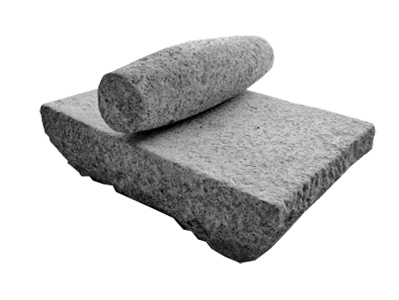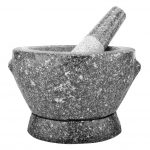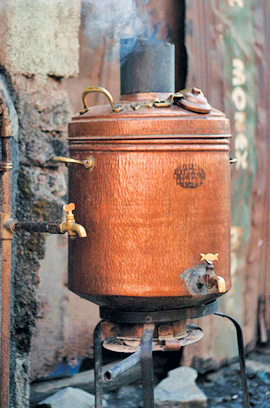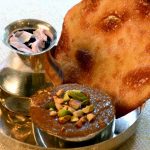“My kitchen is a lovesome den,
A cool spot,
With knives n spoon and pot n pans
Wafting bouquets of viands and spice,
Of soups and roasts, and all that’s nice
I’ll tell you more of this kitchen of mine
That blesseth our table to wine and dine.”

My sincere apologies to the poet, T.E. Brown, for pilfering a couple of his lines and corrupting them. I’m speaking of the kitchen and the food that came therefrom, at my granny’s place, way back in the 1950s. The houses were big, kitchens were cavernous, hearts were large and life was simple. Kitchens were located at the ends of a long line of rooms. Most of them looked alike with almost a similar collection of stoves, a couple of sigris in which coal was burnt, an omnipresent Criterion stove, sometimes a Primus stove and a kitchen platform with a receptacle atop, in which coal or wood used to be burnt. In erstwhile lingo, it was called a sigri.

Few house-kitchens also had a Bumbo, a boiler for heating water for a large family. There would be an assortment of copper vessels of various shapes and sizes. They were handis, tapelas, patias, lungris, and kadais, and smaller vessels like cansias and fullias. There would be ladles and large spoons of various shapes and sizes. Most of the kitchenware was made to last several lifetimes, and many of them were heirlooms indeed, still visible in so many Parsi kitchens today, for proud display and use. I have a few stored away myself, with the name of my great grandmother engraved on these, going back to the nineteenth century. The one I love the most is a pan-o, a round vessel with four round semi-circular receptacles for frying popatjis (a Parsi sweet preparation).

Very few households had ovens for baking so whenever there was anything to be baked, out would come a flat circular disc of tin. It was a unique piece of invention. The lungri with the batter of the pudding or cake to be baked would be covered with the tin disc. It would then be placed on coals in a sigri. Burning ambers would be kept atop a tin disc. This helped to bake any dish evenly, top and bottom.
Every kitchen would have a grinding stone or piswano patthar, Even with the advent of the mixies, many ladies frowned upon the new-fangled gadget and swore that a good curry could only be made if the masala was ground

on the stone. Similarly, steam cookers were frowned upon too, delicacies like papri-ma-gosh and several other dishes were to be cooked only on sigris for the best results. There was the mortar and pestle, khal-batto, one made of stone that was used to crush and mesh masala in small quantity, and a round one made of metal for pounding dry garam masala. There would also be an ice-cream mould or chaaki in many kitchens to churn ice during hot summer days.
I remember vividly waking up once, after a post nursery-school-nap and making a beeline for the kitchen where preparations for the teatime ritual would be in progress. I often wonder whether it was the British who started this ritual of the 4 o’clock chai time or the Parsi grannies. This God’s gift to all good children, the grannies, were a hard working lot and one would rarely see them sitting idle at any time; they would always be cooking or peeling, or sewing or mending or knitting; Superwomen indeed! Grannies had a vast repertoire of recipes for any time of the day, any season of the year and any occasion in our lifetime. Those were the days when the Parsi cuisine had not become a mélange of several influences, mughlai and north Indian cuisine, various south Indian fares, and certainly not Chinese, or what passes off as Chinese today. Italian pastas were decades away, except ofcourse, the vermicelli and the macaroni.
The tea time snacks would be simple puris, sweet or salted, and bhakhras, made in large quantities and stored to be served for several days. Karkarias were delightful little sweet pakoras, the gharries were like pastries – stuffed either with caramelized coconut or with dates and a lots of almonds and raisins. The chapats, somewhat akin to the French crepes, and the oudh were the favourite regulars. In case some country relative had smuggled in a couple of bottles of palm toddy or tari, (still a very highly sought-after beverage in Udvada, with a nearly ritualistic accompaniment with food, when we visit Iran Shah), part of it would be used to make bhakhras, sadhnas or kumas, the Parsi cake. The remaining good stuff would be finished in ‘tasting’ this natural nectar. In case the men of the house did not quaff it all down while ‘tasting’, granny would use it to marinate meat and the next day there would be Tari ma ghosh for the dinner – adelicious, rustic dish.
The most longed for goodie, that divine dish immortalized by AdiMarzban in his radio skit series, was the popatji. The Avamahino would bring several bouts of dar-ni-pori, yet another favourite. Thank God it is not extinct unlike the unfortunate ariso, a nut and milk sweet dish eaten with puris. Khaman-na-larva, my all-time favourite, would be made on anniversaries of weddings, navjots and other such occasions.aradhvaras were made during the rituals of engagement and divo-adarni.
Chicken was rarely on the menu. It was a rarity to be had only during weddings and navjot feasts because there were no cold-storages and broiler chicken was unknown. It would have to be slaughtered at the live chicken shop or at home. One of the most expensive dishes then was the Chicken Maivalhan made with butter, cream, almonds, raisins, pistachios, eggs and shredded chicken. Very few Parsis know of it now, but few caterers have started serving this delicacy in a somewhat modified form.
I wonder if anyone still makes dishes that are mentioned in Dinbai Pestonji Dubash’s book ‘Rojindi Vani-Menu Sangrah’ published in 1945. She has given recipes that are rarely made today, such as Chaspyla-kund ma ghos, Kokum nikadhi, Dohru, Eeda-nu-bharuchikhurchan, Badamdarakh-nu-ratalu-kund-ma ghos, Sheek-sota, Moodinaraschaval, Multanykhichdi, and Kabab. Masoor-ma booka and Masoor-ma jeebused to be quite a favourite as also Choosda-nu (goats intestines)dhansak. Bafat was a popular dish made with meat, chicken, fish and even prawns. Today the word bafat is used only to say ‘bafatkaryu’ when someone commits a faux pas.
No article on Parsi cuisine can be complete without the mention of eggs or in Parsi terminology, eeda. People swear by Parsi-no-poro (omlette). Ditto akuri. Eggs can be made with all sorts of vegetables, mince-meat and shredded chicken. Writer Manohar Mulgaonkar once commented that Muslims make the best biryanis, French make the best sauces and Parsis make the best eggs.Food is my love, my hobby, my favourite past-time and I can go and on about it, but I must resist the temptation to write more or else my editor, a wonderful lady in every way, except when a I exceed the word limit, then she will be after me with a velan (rolling-pin)! Ciao!
- Adarji Angrez! - 16 March2024
- V-Day – The D-Day! - 10 February2024
- Eighteen Going On Eighty! - 13 January2024